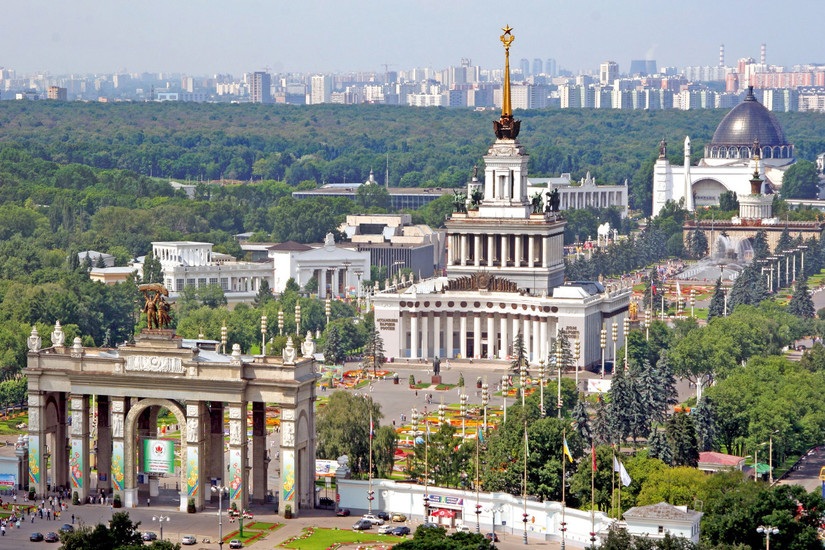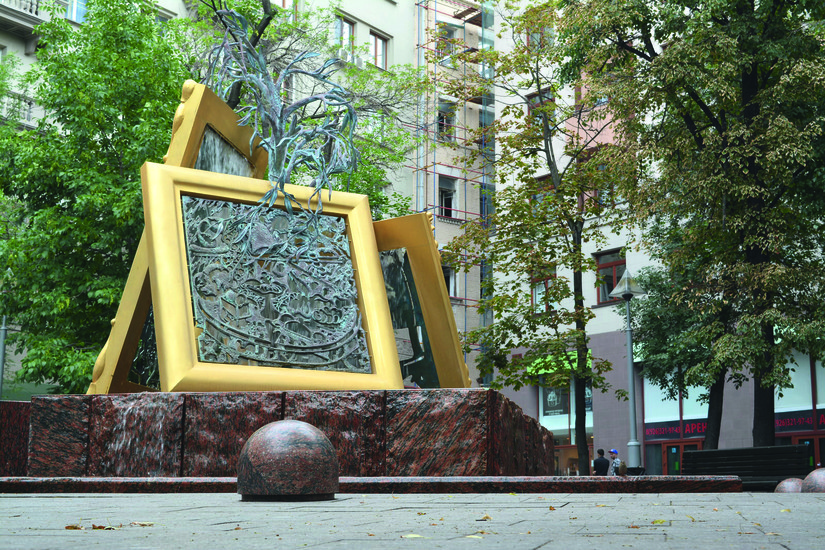One of the most distinct features of the Moscow skyline, Stalin's so-called ‘Seven Sisters’ are still amongst some of the tallest buildings in Europe.
Poor old Stalin. After the defeat of the Nazis in 1945, legend has it he was convinced that everyone in the world would now want to visit Moscow. But Uncle Joe had a little problem. Disregarding the city’s dearth of cheap hotels and non-Cyrillic signage, the great leader had a rather Freudian complex about his capital’s lack of tall buildings. “What if they come to Moscow and don’t see any skyscrapers?” he is reported to have complained.
The results of all this angst are known by some as the ‘Seven Sisters’, but most Moscovites rather more prosaically refer to them as the Vysotniye Zdaniye - the tall buildings. Despite huge demands for housing and infrastructure following the war, early fifties Moscow devoted the bear’s share of its energy to creating these buildings. Being great propaganda magicians, the Soviet leaders used the flurry of construction energy to show the world that, from the ashes of war, the Soviet capital was renewing itself not only better than before, but doing it better than everyone else. The Sisters went on to become the dominant feature of Moscow’s post-war skyline and, in defiance of the growing competition from the current building boom; they remain the definitive architectural statement of the city’s contemporary identity.
For first-time arrivals to Moscow, these mammoth creations certainly make a memorable impression. Emerging from Leningradsky Station off an early Petersburg train into a pre-dawn neon haze, you immediately behold the Hotel Leningradskaya, one of the smallest of the Sisters, completed in 1954 and now part of the Hilton hotels chain. All in all there were eight such buildings planned; two hotels, two government buildings, two housing apartments and the University. The eighth, the Zarayadye, was to have adorned Red Square but, mired in delay, was eventually abandoned.
Trademarks of the Stalinist style of architecture embodied in these buildings are the obvious wedding cake structure that pulls the eye toward the central, massive spire, and the patriotic decorations and mouldings. Critics generally agree that the Stalinist period dates from the 1933 Palace of the Soviets competition to 1955 when Khrushchev disbanded the Architects Union. Super-buildings for a super people, the buildings also utilised new building techniques of building with steel frames with concrete walls upon a concrete slab, which allowed for their massive size.
Restoration of the 29 storey, 1,000 room Radisson Royal Hotel Moscow (formerly Hotel Ukraina) was completed in 2010, transforming the building into a 5 star luxury hotel with Rolls Royce for sale in the lobby. Described as a seedy hotel in the Soviet days yet also awe-inspiring and historical, during the process of renovation, close attention was paid to the building’s original period details. A vast collection of Soviet realist art is proudly displayed as well as a huge diaroma (a miniature version of the city) showing how Moscow looked in the 1970s.
The results of all this angst are known by some as the ‘Seven Sisters’, but most Moscovites rather more prosaically refer to them as the Vysotniye Zdaniye - the tall buildings. Despite huge demands for housing and infrastructure following the war, early fifties Moscow devoted the bear’s share of its energy to creating these buildings. Being great propaganda magicians, the Soviet leaders used the flurry of construction energy to show the world that, from the ashes of war, the Soviet capital was renewing itself not only better than before, but doing it better than everyone else. The Sisters went on to become the dominant feature of Moscow’s post-war skyline and, in defiance of the growing competition from the current building boom; they remain the definitive architectural statement of the city’s contemporary identity.
Grand plans
Whatever Stalin may or may not have said about tourists and skyscrapers, plans for a Moscow makeover were in fact already afoot as early as 1931. That year, the Communist Party approved a number of mega building projects including the reconstruction of Moscow and the Moscow Metro. The next year, when Stalin created the Union of Soviet architects was created, he gave them their mission. More than simply emulating the skyscrapers of America, he wanted to exceed them by creating his own versions - Moscow versions. The first project, a clear forerunner of the Sisters, was the ill-fated Palace of the Soviets, approved in 1933. Though never built, this 415m-high monster set the tone of grandiose classicism that dominated the post-war period.For first-time arrivals to Moscow, these mammoth creations certainly make a memorable impression. Emerging from Leningradsky Station off an early Petersburg train into a pre-dawn neon haze, you immediately behold the Hotel Leningradskaya, one of the smallest of the Sisters, completed in 1954 and now part of the Hilton hotels chain. All in all there were eight such buildings planned; two hotels, two government buildings, two housing apartments and the University. The eighth, the Zarayadye, was to have adorned Red Square but, mired in delay, was eventually abandoned.
Trademarks of the Stalinist style of architecture embodied in these buildings are the obvious wedding cake structure that pulls the eye toward the central, massive spire, and the patriotic decorations and mouldings. Critics generally agree that the Stalinist period dates from the 1933 Palace of the Soviets competition to 1955 when Khrushchev disbanded the Architects Union. Super-buildings for a super people, the buildings also utilised new building techniques of building with steel frames with concrete walls upon a concrete slab, which allowed for their massive size.
The Moscow State University
The looming edifice of the Moscow State University (MGU) was the first of the Seven Sisters to begin construction and was finished second in 1952. In total more than 400 architects worked on the project, submitting countless plans and designs which in turn amounted to a great advertisement for communal process back then. With a height of 235.7m, this squat giant is topped by a 12 tonne star and its massive dimensions ensure that a walk around the perimeter lasts for 3 km. MGU was built using the labour of gulag prisoners and German POWs, some of whom were even housed on an upper floor when not involved in building work. One Daedalus is even supposed to have tried to escape by strapping wooden wings to his arms and springing off the side of the building in an attempt to fly away.Legendary Hotels
Historically the hotels have weathered the last half-century best. The Hilton Moscow Leningradskaya Hotel (formerly Hotel Leningradskaya) underwent a complete renovation in the mid-2000s to become quite the palatial masterpiece. Rightly treating it as a museum piece, the hotel’s restoration has seen much of the original fittings retained - note the long bronze chandelier suspended in one of the corner stairways, and the copies of the gates of the Verkhospassky Cathedral in the Kremlin. The bomb shelter did not receive such historical respect, though, and was transformed into a luxury swimming pool.Restoration of the 29 storey, 1,000 room Radisson Royal Hotel Moscow (formerly Hotel Ukraina) was completed in 2010, transforming the building into a 5 star luxury hotel with Rolls Royce for sale in the lobby. Described as a seedy hotel in the Soviet days yet also awe-inspiring and historical, during the process of renovation, close attention was paid to the building’s original period details. A vast collection of Soviet realist art is proudly displayed as well as a huge diaroma (a miniature version of the city) showing how Moscow looked in the 1970s.







